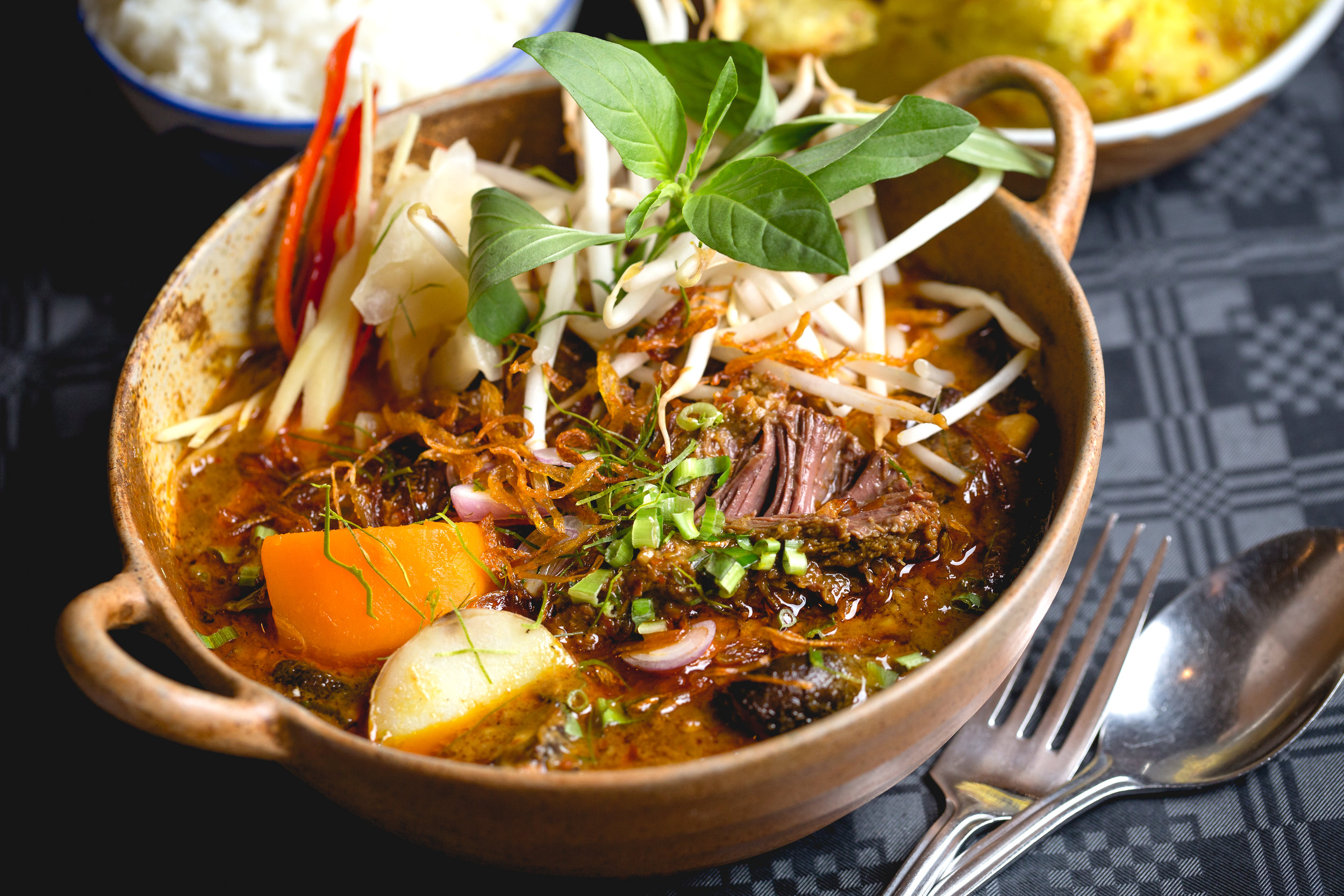Aged beef cheeks braised in coconut cream, lemongrass & galangal with sweet basil

In Thailand and at Farang this beef is dropped into an aromatic curry known as ‘gaeng gari’, which translates as ‘curry curry’, so doesn’t really do it justice as a description really. However it’s a banger of a curry if you want to give it a go and the paste recipe is in my book, ‘Cook Thai’. This version is a bit more user friendly and once you have all the ingredients you can pretty much just bosh it in a pot and you’re off. A one pot wonder, using less than 25 ingredients in the world of Thai cuisine is a rarity and this is certainly a very unique one to try. Using coconut cream and fish sauce instead of stock and salt to braise beef produces some bloody delicious results. This stew is one to try on a cold winters day when you need something to warm the soul, if you want to warm it a little more serve with nahm pla, a ramekin full of sliced birds eye chilli and fish sauce. In the restaurant we love to top this dish with such condiments as pickled cucumber, pickled ginger, crispy shallots and pickled mustard greens. We also use aged beef cheeks from our awesome butchers, Swaledale, located in the Yorkshire Moore’s however you can use any slow cook braising cut you like.
Serves 2 | Gluten-Free
Ingredients:
400g beef cheeks (or beef shin, equally delicious)
2 sticks lemongrass, bruised
2 pieces galangal (40-50g), sliced and smashed
4 kaffir lime leaves, torn
4 long red chillies, bruised
20g Thai shallots, peeled (or any small sweet shallot)
20g ginger, finely julienned
1.5 litres coconut cream (add water or stock if needed)
20-25ml fish sauce (adjust to taste)
60g palm sugar (or soft brown sugar)
1 heaped tablespoon tamarind paste
10g Thai sweet basil
50ml good olive oil
1 tablespoon coarse sea salt
10g coriander, picked and washed
Method:
Prepare the Beef: Coat the beef cheeks in olive oil and sea salt. Massage well to ensure an even coating.
Sear the Beef: Heat a large non-stick frying pan on high. Place the beef in the pan, searing each side for 2 minutes until golden brown. Add lemongrass, galangal, kaffir lime leaves, chillies, shallots, and two-thirds of the ginger. Reduce to medium heat and cook for 3-4 minutes.
Cook the Curry: Preheat an oven to 200°C. Transfer beef and aromatics to an ovenproof tray. Add coconut cream, tamarind, fish sauce, and sugar. Ensure beef is submerged, topping up with cream or stock if needed. Cover tightly with foil and cook in the oven for 3.5-4 hours. Check tenderness; beef should be spoon-soft. If not, continue cooking, checking every 20 minutes.
Adjust and Serve: Taste the coconut broth, adjusting seasoning with more fish sauce or sugar if desired. Serve the beef in bowls, garnished with remaining ginger, Thai basil, and coriander. Pair with steamed jasmine rice for a complete meal.
This dish is a testament to the magic of slow cooking—patience is key! Feel free to share your culinary triumphs with us, and remember, if you didn’t enjoy it... well, we'll still welcome you at Farang for a taste of something new. Cheers to good food and great company!
Head chef & founder of Farang London restaurant. Cookbook author of ‘Cook Thai’ & ‘Thai in 7’. Chief curry paste basher and co-founder of Payst London.
